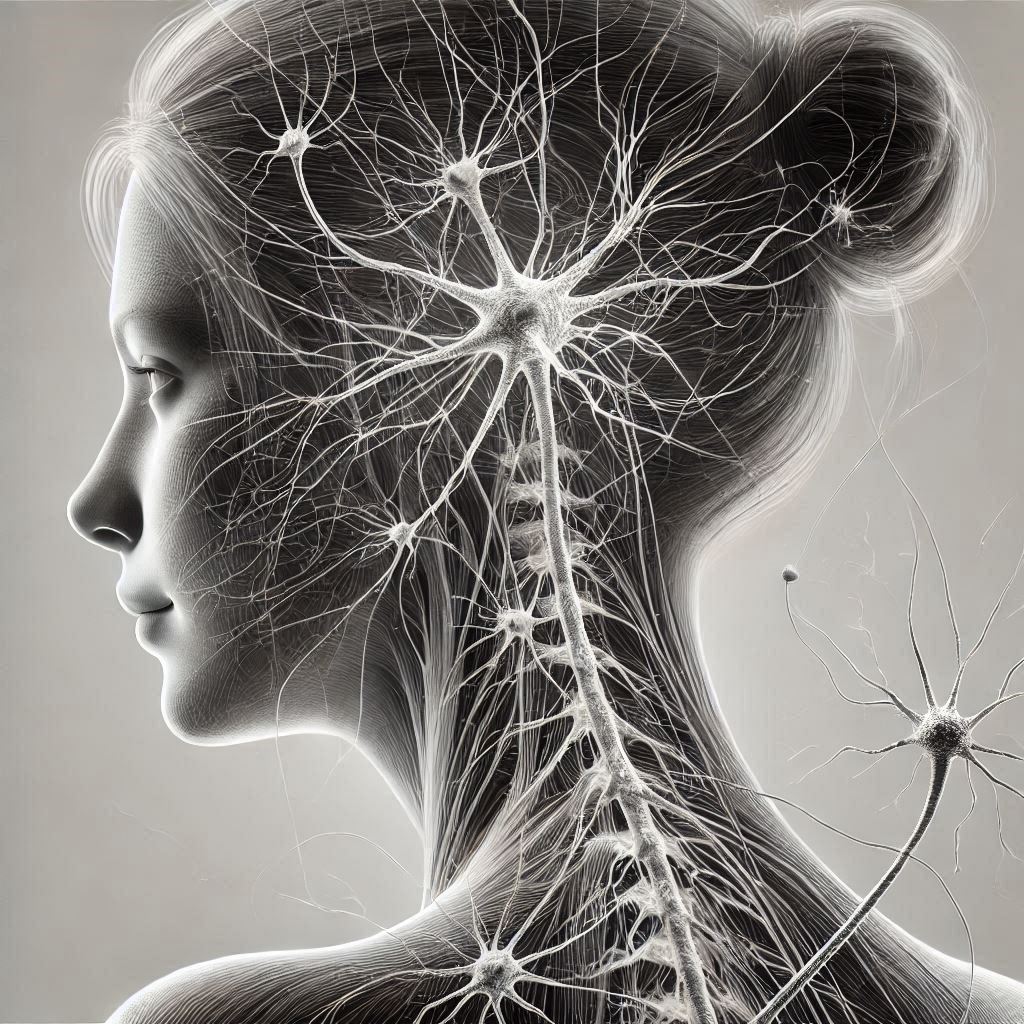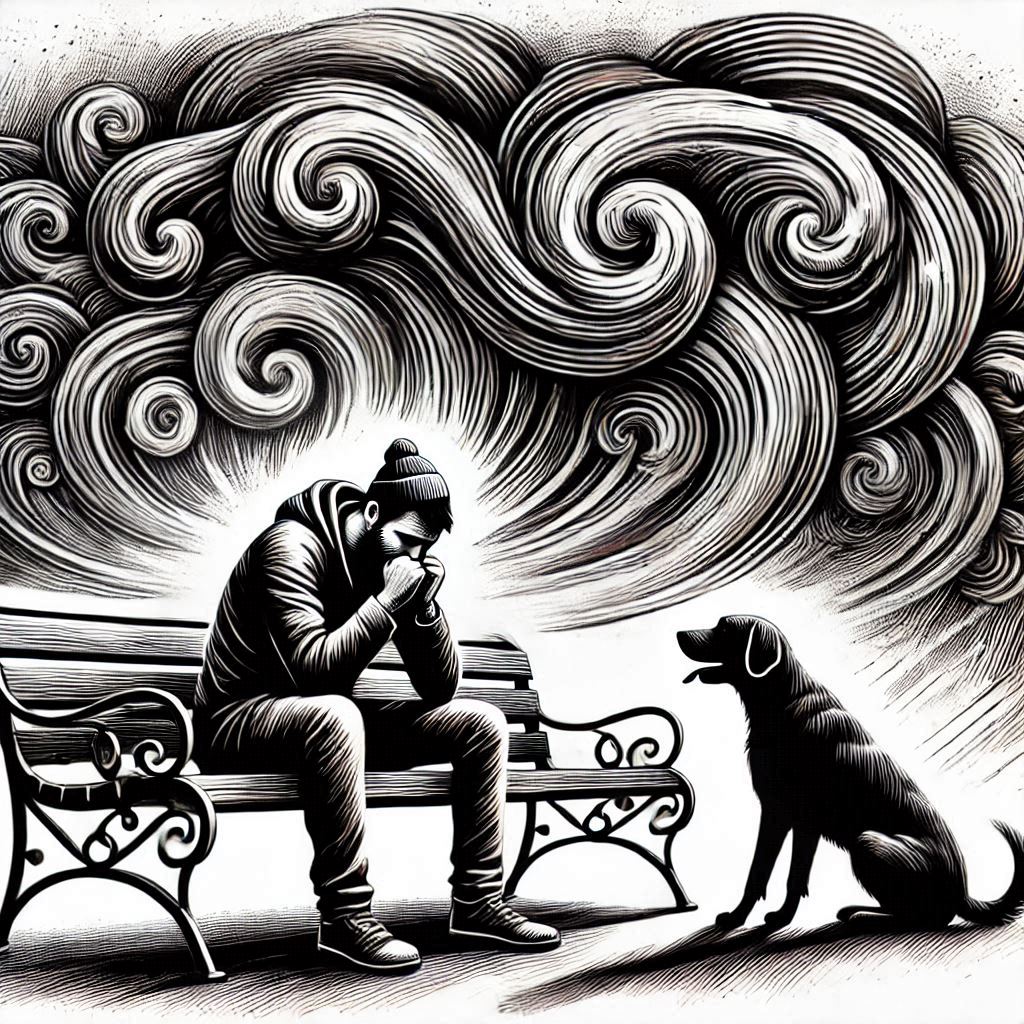Managing a panic attack can feel overwhelming, but cold sensations may offer quick, tangible relief. This simple, accessible technique taps into your body’s natural response to temperature, helping to interrupt the cycle of escalating anxiety.
For people living with panic attacks, understanding this method could provide an effective tool to regain a sense of calm when it’s needed most.
The Science Behind Cold Sensation
Cold sensations can offer immediate relief during a panic attack by triggering specific physiological and psychological responses. These responses engage both the body and mind, helping to disrupt the overwhelming cycle of fear and anxiety. Let’s explore how cold impacts us on a deeper level.
Physiological Effects of Cold
When your body experiences a cold stimulus, such as an ice pack or cold water, it activates the dive reflex. This reflex is a natural, survival-based response that helps conserve energy and prioritize vital functions. Here’s how it works:
- Heart Rate Slows Down: The cold triggers the vagus nerve, part of the parasympathetic nervous system, which can reduce a racing heart. This is particularly important during a panic attack, where an elevated heart rate can escalate feelings of distress.
- Blood Pressure Is Lowered: By stabilizing your heart rate, the body reduces strain on your blood vessels, easing physical tension. This combination helps counteract the fight-or-flight response, creating a sense of physical calm.
Studies back up these effects. Research has shown that cold stimulation can help manage heart rate variability, a marker of stress, and promote balance in the autonomic nervous system. This underlying science makes cold exposure a powerful tool for navigating the physical symptoms of panic.
Psychological Impact
Cold sensations don’t just act on the body—they also help refocus your mind. During a panic attack, your thoughts may race uncontrollably, making it difficult to ground yourself. Cold exposure introduces a sensory “shock” that demands attention, pulling your focus outward:
- Interrupts Negative Thought Loops: The sharp sensation forces your brain to “change the channel,” momentarily interrupting anxious mental patterns.
- Promotes Mindful Awareness: Cold activates your sensory receptors, fostering a state of heightened awareness of the present moment. This can help anchor you in the “now,” counteracting fears of the future or regrets about the past.
Think of cold exposure like pressing a mental reset button. It’s an effective way to redirect your brain’s energy from spiraling anxiety to something tangible and grounding. Psychologists often call this sensory redirection, and it’s a simple-but-powerful strategy for managing overwhelming emotions.
Methods to Utilize Cold Sensations
Using cold sensations for panic attack relief is simple and effective. These methods can be done at home or wherever you find yourself during an episode. The goal is to engage your body’s natural responses to cold and help bring calm back to your system. Below are practical techniques you can incorporate today.
Cold Packs and Ice
Applying cold packs or ice to certain pulse points can quickly calm your body during a panic attack. These areas, such as your wrist, neck, or temples, are where blood vessels are closest to the skin. Cooling them gently lowers your body temperature and helps slow down a racing heart.
How to Use Cold Packs:
- Wrap the ice or cold pack in a thin cloth to avoid direct contact with your skin.
- Place it on pulse points:
- Your wrists or inner arms.
- The back of your neck.
- Your temples.
- Keep it there for 10-15 seconds, removing as needed to avoid discomfort.
The cold sensation serves two purposes: First, it physically slows overactive systems triggered by anxiety. Second, it grabs your attention, bringing your focus to the present moment and breaking the spiral of anxious thoughts.
Cold Showers
Few things reset the system like the jolt of a cold shower. While it may sound uncomfortable, this method is incredibly effective. The sudden cold shocks your body into the “here and now,” overriding the fight-or-flight response common during a panic attack.
Why Consider Cold Showers?
- The chill prompts deep, steady breaths, which naturally regulate your nervous system.
- It redirects your focus from overwhelming thoughts to the sharp, immediate sensation of water.
- The cold boosts circulation, bringing fresh energy and clarity to your mind.
How to Try It:
- Start with lukewarm water, then gradually lower the temperature.
- Focus on your breathing as the water cools. Breathe in deeply and exhale slowly.
- Stay in the cold water for 20-30 seconds or as long as feels helpful.
If you’re hesitant, begin by splashing cold water on your face. This can deliver similar benefits without the commitment of a full cold shower.
Cold Water Immersion
Cold water immersion, like ice baths or dipping into cold pools, provides an even more intense reset. This method is ideal if you’re looking for prolonged relief or a way to prevent recurring panic attacks.
Immersing your body in cold water takes the calming effects of cold sensations to the next level. It engages your dive reflex, slowing your heart rate and improving nervous system balance. While not for everyone, this technique works well when done safely.
Steps for Cold Immersion:
- Fill a tub or large container with cold water (add ice if available).
- Submerge your hands, feet, or even your entire body if comfortable.
- Focus on steady, calming breaths as you adjust to the temperature.
Other Options:
- Try cold plunges in natural water bodies like lakes or rivers.
- Use specially designed at-home ice baths for controlled immersion.
This method isn’t about enduring discomfort—it’s about using the cold as a tool to bring relief. If diving into cold water feels too extreme, start small by immersing just your hands or feet and work up from there.
Each of these methods offers unique benefits, making it easier for you to find what works best in managing panic attacks. Remember, the key is to let the cold interrupt your anxious cycle and bring you back to center.
Combining Cold Sensation with Other Techniques
Pairing cold sensations with additional methods can amplify their calming effects during a panic attack. By integrating breathing exercises and mindfulness practices, you can create a multi-layered approach that addresses both the physical and mental aspects of anxiety.
Breathing Techniques
Breathing deeply while engaging with cold sensations can help regulate your body and mind more effectively. Panic attacks often disrupt your natural breathing pattern, making it short and rapid. Intentional breathing paired with cold exposure can counteract this.
How to Combine Breathing with Cold Sensations:
- Choose your cold method: Use an ice pack, cold water, or a chilled object. Place it on a pulse point like your wrist or neck.
- Practice slow breathing: Inhale slowly through your nose for a count of four. Hold for four seconds, then exhale for six through your mouth.
- Synchronize the two: Focus on the cold sensation as you breathe. The chilly touch enhances awareness, guiding you to stay present with each breath.
This pairing creates a cycle: slow, controlled breathing calms your heart, while the cold stimulus keeps your attention grounded. Together, they reduce the overwhelming sense of panic and restore balance.
If counting feels difficult in the moment, simplify the process. Visualize the cold “cooling down” a racing heart or laying a blanket of calm over your body. This image can help connect your breathing to the physical sensation.
Mindfulness Practices
Mindfulness is the practice of being fully present in the moment, and cold sensations are a perfect entry point. Their sharp, immediate nature grabs your attention, making it easier to focus even during heightened anxiety.
Steps to Use Mindfulness with Cold Sensations:
- Acknowledge the panic: Don’t fight the symptoms—recognize them without judgment. Think of it as observing passing clouds.
- Turn your focus to the cold: Notice every detail: Is it sharp or soft? Wet or dry? How does your skin react?
- Combine with grounding statements: Say to yourself, “I feel this cold object in my hand,” or “This water is cool and refreshing.”
Mindfulness encourages curiosity about what you’re feeling, which helps take power away from overwhelming thoughts. Instead of being trapped in the storm of emotions, you anchor yourself to something tangible and manageable—the cold sensation.
Tip: If your mind drifts back to anxiety, gently guide it back to the cold feeling. Treat it like steering a boat that briefly strays off course.
Together, breathing and mindfulness elevate the simple act of engaging with cold sensations. These combined techniques not only soothe your body but also train your mind to regain control during panic attacks.
Safety Considerations
Cold sensations can be powerful tools for managing panic attacks, but they must be used safely. Misusing cold methods can lead to harm, undermining their benefits. By following a few easy precautions, you can protect your skin and health while gaining relief.
Avoiding Frostbite
Using ice or cold objects incorrectly can lead to frostbite or skin damage. Frostbite results from prolonged exposure to extreme cold, and it’s preventable with simple safeguards.
Here are tips to use cold safely:
- Never place ice directly on your skin. Always use a barrier like a cloth or paper towel to prevent burns.
- Limit exposure time. Keep the ice or cold item on your skin for no more than 10-15 seconds at a time. Re-check skin sensitivity before repeating.
- Monitor the skin. If you notice redness, numbness, or pain, remove the cold source immediately. Your safety matters more than extending exposure.
- Avoid damaged skin. Don’t apply cold to cuts, abrasions, or irritated areas, as it could slow healing or cause more harm.
- Use alternatives if needed. If ice feels too intense, try a cool, damp cloth for a gentler experience.
By taking these precautions, you can maximize the positive effects of cold sensations without risking long-term harm. Treat cold like a tool with clear limits—effective but best handled with care.
When to Seek Help
Sometimes, panic attack symptoms or poor responses to cold methods may signal a larger issue. Knowing when to seek help ensures you’re addressing the root cause, not just the moment.
Watch for these signs:
- Extreme or lingering discomfort. If cold methods cause unbearable pain or prolonged numbness, stop and consult a professional.
- Unrelieved panic symptoms. If symptoms persist or worsen despite trying relief techniques, reach out to your doctor or therapist.
- Underlying medical concerns. Conditions like Raynaud’s disease or circulatory problems may react poorly to cold exposure. Always discuss such techniques with your healthcare provider before using them.
- Skin injuries. Blisters, discoloration, or burns from cold exposure require prompt medical attention. Don’t delay if you notice damage.
Remember, self-care has limits. While cold sensations can interrupt panic attacks, they aren’t a substitute for professional diagnosis or treatment. If you’re unsure about your symptoms or response, it’s always better to ask for guidance.
Using cold techniques for panic relief is safe with the right precautions, but safety should always come first. Protect your skin, listen to your body, and seek help when needed to ensure a balanced, effective approach.
Conclusion
Cold sensations offer a practical, science-backed method to ease panic attacks by calming both body and mind. They interrupt anxious thought patterns and activate physiological responses that promote relaxation. Easy-to-use techniques like cold packs, showers, or immersion empower individuals to regain control during overwhelming moments.
Starting small and staying consistent can make these methods a reliable part of your anxiety management toolkit. Try them for quick relief, but always prioritize safety and consult a healthcare professional if symptoms persist. Your well-being is worth it—take the first step toward finding what works best for you.








